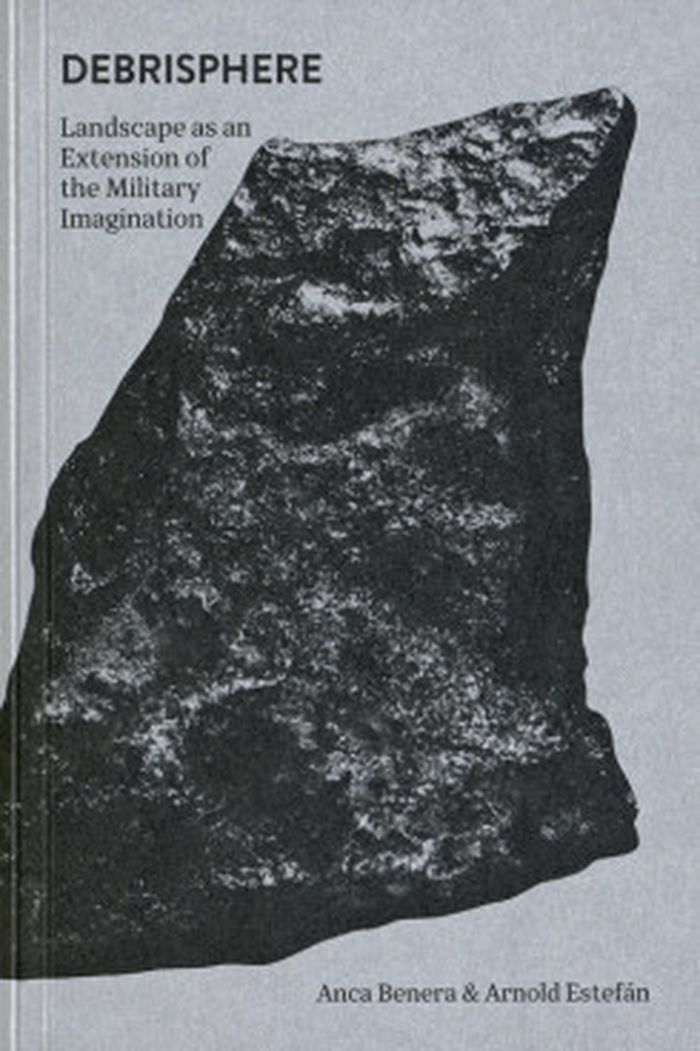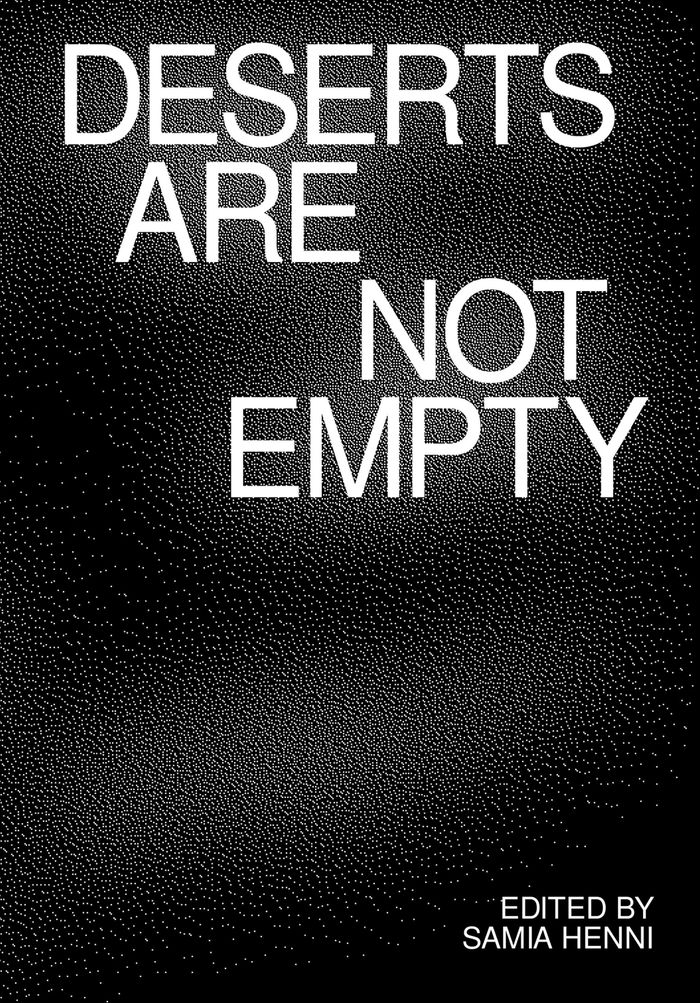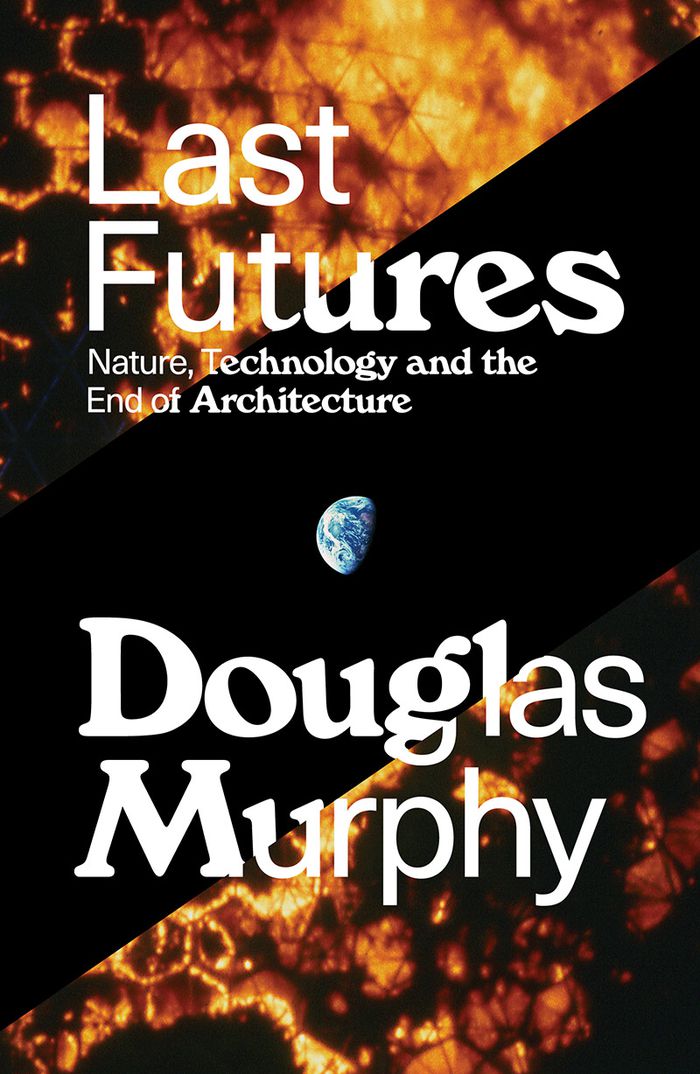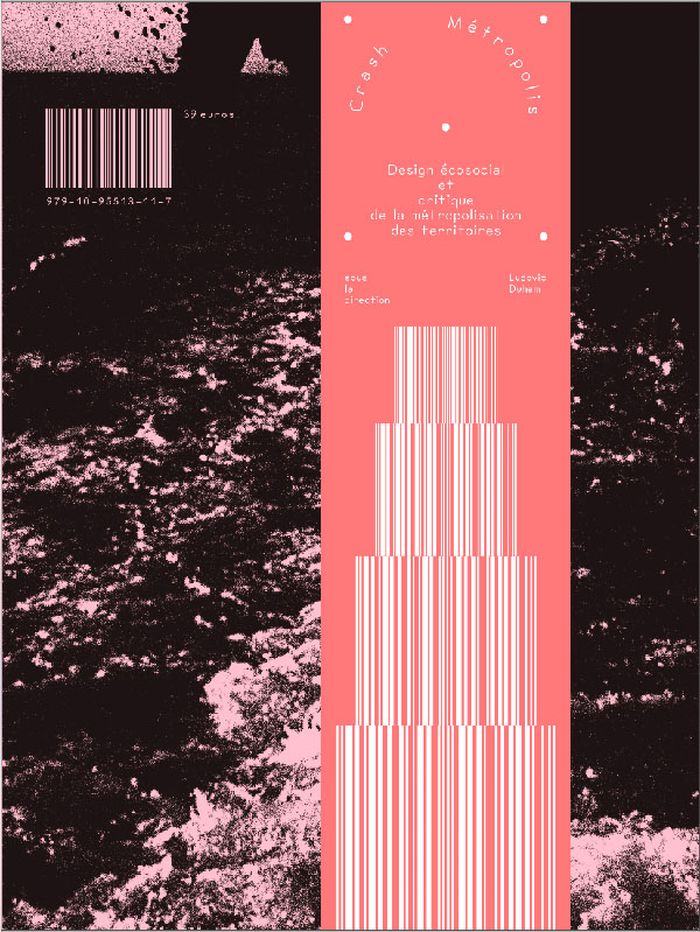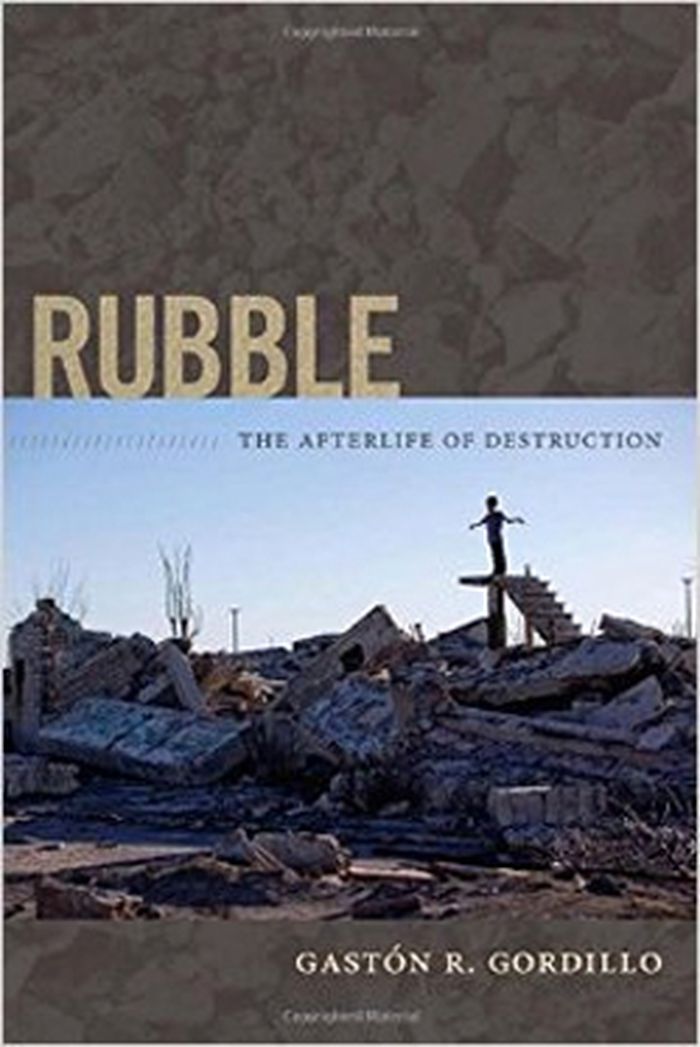$39.95
(available to order)
Summary:
Debrisphere is a yet-unnamed stratum of Earth's crust, a supra-stratum of the Lithosphere. It contains the worldwide man-made landscapes: the artificial mountains of Germany, the “blooming deserts” of Israel, the military coral reefs of China and the United States, and other similar constructions around the world resulted from, or still serving, conflict and war. The(...)
Debrisphere: Landscape as an extension of the military imagination
Actions:
Price:
$39.95
(available to order)
Summary:
Debrisphere is a yet-unnamed stratum of Earth's crust, a supra-stratum of the Lithosphere. It contains the worldwide man-made landscapes: the artificial mountains of Germany, the “blooming deserts” of Israel, the military coral reefs of China and the United States, and other similar constructions around the world resulted from, or still serving, conflict and war. The artist's book by Anca Benera and Arnold Estefan is published as an extension to their eponymous installation, presented for the first time in the frame of “Natural Histories. Traces of the Political” exhibition at MUMOK Vienna in 2017. Alongside the artists' case studies, which include Ariel Sharon Park, Teuflesberg, Diego Garcia, Johnston Atoll and the Spartly Islands, the publication includes four republished texts by Andrew Chubb, Hito Steyerl and Eyal Weizman, and newly commissioned texts by Noit Banai, Maja & Reuben Fowkes and Raluca Voinea.
Architecture ecologies
Deserts are not empty
$30.00
(available to order)
Summary:
Colonial and imperial powers have often portrayed arid lands as “empty” spaces ready to be occupied, exploited, extracted, and polluted. Despite the undeniable presence of human and nonhuman lives and forces in desert territories, the “regime of emptiness” has inhabited, and is still inhabiting, many imaginaries. This volume challenges this colonial tendency, questions(...)
Deserts are not empty
Actions:
Price:
$30.00
(available to order)
Summary:
Colonial and imperial powers have often portrayed arid lands as “empty” spaces ready to be occupied, exploited, extracted, and polluted. Despite the undeniable presence of human and nonhuman lives and forces in desert territories, the “regime of emptiness” has inhabited, and is still inhabiting, many imaginaries. This volume challenges this colonial tendency, questions its roots and ramifications, and remaps the representations, theories, histories, and stories of arid lands—which comprise approximately one-third of the Earth’s land surface. It brings together poems in original languages, conversations with collectives, and essays by scholars and professionals from the fields of architecture, architectural history and theory, curatorial studies, comparative literature, film studies, landscape architecture, and photography. These different approaches and diverse voices draw on a framework of decoloniality to unsettle and unlearn the desert, opening up possibilities to see, think, imagine it otherwise.
Architecture ecologies
$25.95
(available to order)
Summary:
In the late 1960s the world was faced with impending disaster: the height of the Cold War, the end of oil and the decline of great cities throughout the world. Out of this crisis came a new generation that hoped to build a better future, influenced by visions of geodesic domes, walking cities and a meaningful connection with nature. In this work of cultural history,(...)
Last futures: natures, technology and the end of architecture
Actions:
Price:
$25.95
(available to order)
Summary:
In the late 1960s the world was faced with impending disaster: the height of the Cold War, the end of oil and the decline of great cities throughout the world. Out of this crisis came a new generation that hoped to build a better future, influenced by visions of geodesic domes, walking cities and a meaningful connection with nature. In this work of cultural history, architect Douglas Murphy traces the lost archeology of the present day through the works of thinkers and designers such as Buckminster Fuller, the ecological pioneer Stewart Brand, the Archigram architects who envisioned the Plug-In City in the ’60s, as well as co-operatives in Vienna, communes in the Californian desert and protesters on the streets of Paris. In this mind-bending account of the last avant-garde, we see not just the source of our current problems but also some powerful alternative futures.
Architecture ecologies
$52.50
(available in store)
Summary:
Le risque majeur de notre époque est celui d’un crash territorial total. La métropolisation à marche forcée provoque la marchandisation des territoires et la dégradation des milieux qui les rendent habitables. Ce volume tente d’y répondre en réunissant chercheurs, concepteurs et activistes reconnus pour leur engagement. Leurs contributions examinent l’implication directe(...)
Crash metropolis : Design écosocial et critique de la métropolisation des territoires
Actions:
Price:
$52.50
(available in store)
Summary:
Le risque majeur de notre époque est celui d’un crash territorial total. La métropolisation à marche forcée provoque la marchandisation des territoires et la dégradation des milieux qui les rendent habitables. Ce volume tente d’y répondre en réunissant chercheurs, concepteurs et activistes reconnus pour leur engagement. Leurs contributions examinent l’implication directe des designers, architectes, urbanistes et artistes pour comprendre leur responsabilité et les potentiels de « réhabitation » que ces pratiques peuvent porter. Dans ce travail de « recherche-édition » richement illustré les différents régimes de discours (textes et images) et les propositions graphiques soutiennent l’esprit critique et expérimental du projet. Sous la direction de Ludovic Duhem, philosophe, coordinateur de la recherche à l’École Supérieure d’Art et de Design de Valenciennes.
Architecture ecologies
$39.95
(available to order)
Summary:
At the foot of the Argentine Andes, bulldozers are destroying forests and homes to create soy fields in an area already strewn with rubble from previous waves of destruction and violence. Based on ethnographic research in this region where the mountains give way to the Gran Chaco lowlands, Gastón R. Gordillo shows how geographic space is inseparable from the material,(...)
Rubble: the afterlife of destruction
Actions:
Price:
$39.95
(available to order)
Summary:
At the foot of the Argentine Andes, bulldozers are destroying forests and homes to create soy fields in an area already strewn with rubble from previous waves of destruction and violence. Based on ethnographic research in this region where the mountains give way to the Gran Chaco lowlands, Gastón R. Gordillo shows how geographic space is inseparable from the material, historical, and affective ruptures embodied in debris. His exploration of the significance of rubble encompasses lost cities, derelict train stations, overgrown Jesuit missions and Spanish forts, stranded steamships, mass graves, and razed forests. Examining the effects of these and other forms of debris on the people living on nearby ranches and farms, and in towns, Gordillo emphasizes that for the rural poor, the rubble left in the wake of capitalist and imperialist endeavors is not romanticized ruin but the material manifestation of the violence and dislocation that created it.
Architecture ecologies
